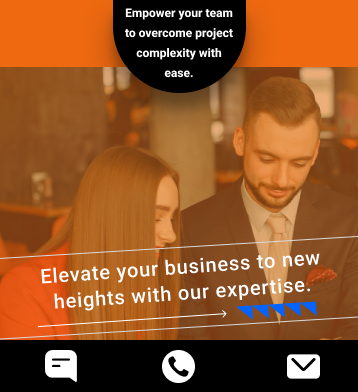
From E-A-T to E-E-A-T: How Google’s Authority Update is Changing SEO

In a world filled with AI-generated articles, how does Google tell the difference between real, helpful advice and recycled spam? It’s a huge challenge for anyone creating content today.
The answer lies in a concept called E-E-A-T.
This framework—Experience, Expertise, Authoritativeness, and Trustworthiness—is Google’s guide for identifying high-quality, people-first content. It’s a signal that your content comes from a real human with real insights.
This article will break down exactly what the Google E-E-A-T update means for you. We’ll cover the key differences in E-A-T vs E-E-A-T and give you a checklist of best practices to help you create content that both readers and Google will love.
What is E-E-A-T? A Deeper Look at Google’s Quality Framework
First, let’s clear up a common misunderstanding. E-E-A-T is not a single, traditional algorithm update. You can’t measure it with a simple score.
Instead, E-E-A-T is a core concept from Google’s Search Quality Rater Guidelines. These are the rules that human reviewers use to evaluate the quality of search results.
Their feedback helps Google understand if its algorithms are working correctly. Over time, Google’s systems learn to reward the kinds of pages that the human raters identify as high-quality.

Understanding the Four Pillars: Experience, Expertise, Authoritativeness, and Trustworthiness
E-E-A-T is built on four key ideas, with Trust being the foundation for everything else.
- Experience: Does the author have first-hand, real-life experience with the topic? For a product review, this means they’ve actually used the product.
- Expertise: Does the author have the necessary skills or knowledge? For a tax guide, this would be a certified accountant.
- Authoritativeness: Is the author or website widely recognized as a go-to source in their field? This is often shown through links and mentions from other respected sites.
- Trustworthiness (Trust): This is the most important pillar. Is the site secure (HTTPS)? Is the author honest and are the facts accurate? Trust is the center of the entire framework.
E-E-A-T is a Concept, Not a Direct Ranking Factor
There isn’t a magical “E-E-A-T score” that Google assigns to your website. You can’t find it in any SEO tool.
Think of it more as a guiding principle. Google has many different systems that work together to find content that aligns with E-E-A-T. These include things like the Helpful Content System and its analysis of backlinks.
As former Google VP Ben Gomes said, the rater guidelines “don’t tell you what the algorithm is doing, they tell you what we want the algorithm to do.” E-E-A-T is the goal, and Google’s algorithms are constantly being refined to reach it.
The Critical Role of E-E-A-T for YMYL (Your Money or Your Life) Topics
So, where does this matter most? In a category Google calls “Your Money or Your Life” (YMYL).
YMYL topics are those that can significantly impact a person’s health, financial stability, or safety.
Examples include:
- Medical advice
- Financial news and investment tips
- Legal information
- News about major world events
For these queries, Google’s standards for E-E-A-T are incredibly high. Why? Because low-quality information on these topics can cause serious harm. Google wants to ensure it’s showing content from truly experienced, expert, and trustworthy sources.
The Big Shift: Why Google Added an Extra “E” for Experience
For years, the framework was just E-A-T. In late 2022, Google officially added the first “E” for Experience. Why the change? It was a strategic move to address a changing web.

A Direct Response to AI and Unhelpful Content
With the rise of AI tools, it became very easy to create articles that sounded professional but lacked any real insight.
These articles often just rephrase information already found on other top-ranking pages. They have no soul and offer no unique value.
By adding “Experience,” Google sent a clear message: we value content from people who have actually done the thing they are writing about. This helps separate authentic content from low-quality, aggregated fluff.
Aligning with the “Helpful Content System” and “People-First” Principles
The addition of Experience perfectly matches Google’s push for “people-first content.”
The Helpful Content System is specifically designed to reward content created for humans, not just for search engine algorithms.
What’s more helpful than learning from someone who has firsthand experience? Whether it’s a review of a hiking boot from someone who has climbed a mountain in them or a recipe from someone who has cooked it a dozen times, that experience is invaluable.
Experience vs. Expertise: What’s the Real Difference?
It’s easy to confuse these two. When is lived experience more important, and when do you need formal expertise?
Let’s look at a simple comparison:
| Topic | Experience is Most Helpful | Expertise is Most Helpful |
|---|---|---|
| Product Review | Someone who bought and used the product for months. | A lab technician who only tested the product’s technical specs. |
| Travel Guide | A traveler who spent a week exploring a city’s cafes and side streets. | An academic who has only studied the city’s history from books. |
| Tax Advice | Someone sharing their personal story of using tax software. | A certified public accountant (CPA) explaining complex tax law. |
| Tax Advice | Someone sharing their personal story of using tax software. | A certified public accountant (CPA) explaining complex tax law. |
| Medical Information | A patient sharing their personal journey with a condition. | A doctor explaining the diagnosis and treatment for that condition. |
Both are valuable, but for different search queries. E-E-A-T recognizes that the best person to answer a question isn’t always the one with the most advanced degree.
E-A-T vs. E-E-A-T: A Practical Comparison for SEOs
Let’s get right to it. What is the practical difference between the old framework and the new one? Understanding this is key to adjusting your content strategy.
Side-by-Side Comparison Table
This table breaks down the core shift in focus.
| E-A-T (The Old Way) | E-E-A-T (The New Way) |
|---|---|
| Focus: Credentials, formal expertise, and reputation. | Focus: Adds authenticity, first-hand proof, and real-world application. |
| What Mattered: What degrees do you have? Who links to you? | What Matters: Have you actually used this? Can you show proof? |
| Example: An article on a camera by a writer who only read the manual. | Example: An article by a photographer with original photos taken with that camera. |
How the Update Changes Content Evaluation
Under the old E-A-T model, an article by a Ph.D. who did extensive research on a topic was often seen as the gold standard. Their credentials screamed “Expertise.”
Under E-E-A-T, that’s still valuable. But now, an article by someone who has actually lived the experience might be considered even more helpful for certain queries.
Think about a search for “best running shoes for flat feet.” Would you rather read an article by a scientist who studied shoe materials or one by a marathon runner with flat feet who has tested ten different pairs? Most people would choose the runner. That’s the power of Experience.
Impact on Content Formats: The Rise of Reviews, Case Studies, and Personal Stories
This shift naturally gives more weight to certain types of content.
Formats that powerfully demonstrate Experience are now more important than ever. These include:
- Detailed product reviews with original photos and videos.
- In-depth case studies showing real results.
- Personal stories and anecdotes.
- Tutorials that show a process from start to finish.
Content that proves you know your stuff because you’ve been there is what E-E-A-T is all about.
E-E-A-T Best Practices: A Strategic Checklist for Content Creators
So, how do you put this all into practice? Here is a checklist of actionable steps you can take to improve your content and website.
Demonstrating Experience & Expertise (The “E-E” Signals)
These signals show you have both the hands-on and theoretical knowledge.
- At the Author Level:
- Create detailed author bios that highlight relevant life and work experience.
- Link author bios to their social media profiles or personal websites.
- Use Author Schema Markup to tell Google who wrote the content.
- At the Content Level:
- Use first-person language where appropriate (“I tested,” “In my experience…”).
- Include original photos, screenshots, and videos that you created.
- Share personal anecdotes, data, and case studies.
- Clearly cite your sources for any claims or statistics you mention.
Building Authority (The “A” Signals)
Authority is about being recognized as a leader in your field.
- Link Building & Digital PR: Focus on earning high-quality links and mentions from other respected websites in your niche. As SEO experts like Marie Haynes and Lily Ray often discuss, not all links are created equal. One link from a top industry site is worth more than a hundred from irrelevant blogs.
- Topical Authority: Don’t just write one-off articles. Build comprehensive content hubs that cover a topic from every angle. This positions your site as the go-to resource for that subject.
Establishing Trust (The “T” Signals)
Trust is the bedrock. Without it, the other letters don’t matter. At ITXITPro, this is the first thing we advise clients to focus on.
- On-Page Trust Signals:
- Create a detailed “About Us” page explaining who you are and your mission.
- Provide clear and easy-to-find contact information (address, phone, email).
- Have transparent editorial policies, especially if you publish sponsored content.
- Make sure your website is secure with HTTPS.
- Off-Page Trust Signals:
- Manage your online reputation. Encourage and respond to reviews on sites like Google Business Profile, Trustpilot, or G2.
- Be active and helpful on social media and in online communities.
How Google’s Systems Might Measure E-E-A-T
While there is no E-E-A-T score, we can make educated guesses about how Google’s systems translate these concepts into signals its algorithms can understand.
PageRank and Link Analysis for Authority
This is the classic signal. Google’s PageRank system, though evolved, still uses links as a vote of confidence. When an authoritative site links to you, it’s passing some of its authority to your page. This remains a core signal for the “A” in E-E-A-T.
Helpful Content System for Experience and Quality
Google’s Helpful Content System is designed to identify content that seems written for people and demonstrates a satisfying experience. It looks for content that shows depth of knowledge. This aligns perfectly with rewarding both Experience and Expertise.
Information Gain & Navboost for User Satisfaction
These are more advanced concepts. At a high level, they ask:
- Information Gain: Does your content provide a new fact or a unique perspective that other top-ranking pages don’t? This rewards unique experience and deep expertise.
- Navboost: This system looks at user interaction signals. Did users find your page helpful and end their search, or did they click back to Google and choose another result? A positive outcome suggests your page met their needs, a key component of Trust.
Conclusion
E-E-A-T isn’t just a new acronym to memorize. It represents a fundamental shift in how Google evaluates content. It’s a move away from SEO tricks and toward rewarding authentic, human-centric information.
The new goal is not just to prove you are an expert, but also to show you have relevant, first-hand experience and have earned the trust of your audience.
Ultimately, the most future-proof SEO strategy is simple: stop trying to please an algorithm and start focusing on being genuinely helpful to the person on the other side of the screen.
Frequently Asked Questions (FAQ)
Q1: Is E-E-A-T a confirmed Google ranking factor?
A1: No, E-E-A-T is not a direct, measurable ranking factor. It is a framework from Google’s Search Quality Rater Guidelines that influences how Google designs and evaluates its ranking algorithms. Google’s systems use many signals to reward content that aligns with the principles of E-E-A-T.
Q2: How can I quickly improve my website’s E-E-A-T?
A2: A quick win is to improve your author bios and “About Us” page. Ensure they clearly state the author’s real-world experience and credentials. For content, add original images or videos showing first-hand use of a product or process to immediately inject the “Experience” signal.
Q3: Does E-E-A-T matter for a non-YMYL blog, like a hobby website?
A3: Yes, it still matters. While the standards are highest for YMYL topics, Google applies E-E-A-T principles to all queries. For a hobby blog, demonstrating personal experience (the first “E”) is extremely powerful. Showing photos of your projects, detailing your unique process, and sharing personal stories are all excellent ways to demonstrate E-E-A-T and build a trusting audience.













